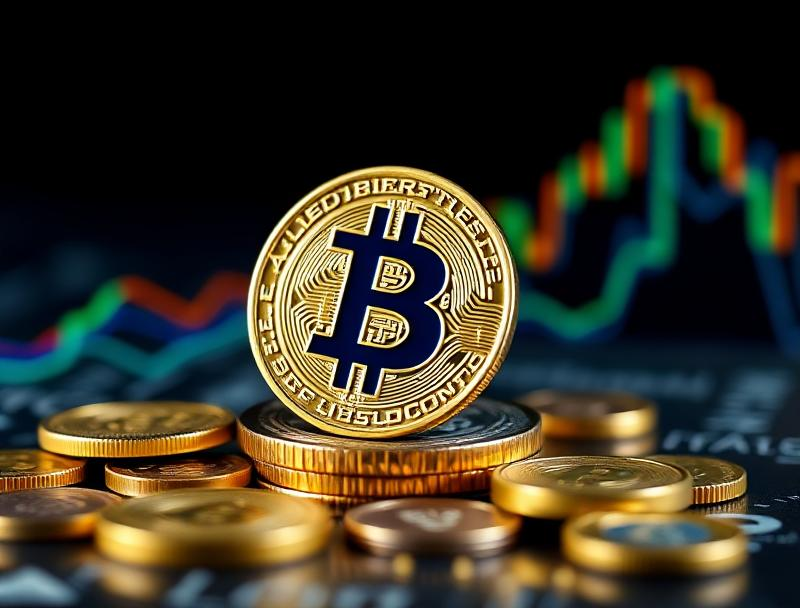Ethereum users pay a small amount of price denominated in “gas” to complete each operation on the network. This expense covers computational effort needed to process and validate actions like sending tokens or executing smart contracts. The amount charged depends on network demand and complexity of the task, making it crucial to monitor these fees before confirming any transfer.
Every interaction on Ethereum requires a specific allocation of gas units multiplied by a gas price, expressed in gwei. This calculation determines the final payment required from the user. Higher priority transactions often include increased gas prices, incentivizing miners or validators to include them faster in blocks. Understanding how these costs fluctuate helps avoid overpaying or experiencing delays.
The relationship between transaction speed and price is direct: setting a lower gas price usually results in slower processing times or even failure if fees fall below network minimums. Tools exist that display current average gas prices and recommended values for different urgency levels, empowering users to make informed decisions about spending on operational expenses while interacting with decentralized applications.
Keeping track of recent trends and typical charges provides practical insight into managing Ethereum expenses efficiently. By grasping how various factors affect these transactional fees, individuals can optimize their activity on the blockchain, balancing cost against confirmation time without unnecessary overspending.
Understanding Gas Fees: Transaction Costs Explained
To execute operations on the Ethereum blockchain, users must pay a charge that compensates miners or validators for processing and validating data. This expense fluctuates based on network activity and complexity of the requested operation. Essentially, it acts as an incentive mechanism ensuring timely inclusion of requests into blocks.
The amount paid depends on two key factors: the computational work required by the request and the current market value set by participants competing to prioritize their transactions. These expenses are denominated in a native cryptocurrency unit and are calculated using specific metrics reflecting resource consumption.
How Pricing Mechanisms Work Within Ethereum
The network employs a unit known as gas to measure the effort necessary for each computational step or data storage action. Each instruction within a smart contract consumes a predefined number of units, which collectively determine total consumption. The user then multiplies this quantity by the price per unit, often referred to as “gas price,” expressed in Gwei (a subdivision of Ether).
This dynamic pricing system means that during periods of high demand, participants raise their bids to have their requests processed faster, causing fees to increase significantly. Conversely, when congestion is low, prices drop accordingly. For example, transferring simple tokens requires fewer units compared to executing complex decentralized finance protocols, leading to varied charges.
A practical illustration involves comparing two scenarios: sending ETH from one wallet to another versus interacting with a decentralized exchange’s liquidity pool contract. The former might cost tens of thousands of gas units at a lower price point, while the latter may consume several hundred thousand units due to intricate logic behind swaps and calculations.
The introduction of Ethereum Improvement Proposal (EIP)-1559 changed how payments are structured by splitting charges into a base fee burned permanently and an optional priority tip incentivizing faster processing by miners or validators. This mechanism improves predictability but still leaves room for bidding wars under heavy traffic.
For newcomers exploring blockchain interactions, monitoring tools like gas trackers offer real-time insight into current pricing trends and recommended values for different urgency levels. Adjusting offered rates based on these analytics ensures better control over expenses without sacrificing speed unnecessarily.
- Tip: Use wallets supporting dynamic fee suggestions aligned with network conditions.
- Caution: Setting very low fees may result in delayed confirmations or dropped requests.
- Savings: Batch multiple actions where possible to optimize overall consumption.
This framework helps users navigate costs effectively while promoting efficient utilization of blockchain resources through well-informed decisions tailored to individual priorities and budgets.
How Gas Fees Calculate Transactions on Ethereum Network
To determine the price required for processing an action on the Ethereum blockchain, two main components are considered: the amount of computational work needed and the current demand on the network. Each operation consumes a specific unit called “gas,” which quantifies how much effort is necessary to execute it. Multiplying this gas by the current gas price, set in gwei (a fraction of ether), results in the total charge for completing that action.
The network dynamically adjusts these values based on congestion levels. When many users compete to have their operations included promptly, higher prices incentivize miners or validators to prioritize those tasks. Conversely, during low activity periods, prices typically decrease, reducing expenses for participants.
Detailed Breakdown of Calculation Methodology
Each instruction executed within Ethereum’s virtual machine carries a predefined gas cost. Simple transfers of ether require less computational effort compared to complex smart contract interactions involving multiple steps and data storage. For instance:
- A basic token transfer might consume around 21,000 units of gas.
- Executing a decentralized finance (DeFi) protocol trade could exceed 100,000 units due to intricate logic.
This consumption measurement forms the baseline for fees calculation by multiplying with the user-selected gas price.
The base fee, introduced after Ethereum’s London upgrade (EIP-1559), serves as a mandatory minimum that burns part of the payment, reducing total supply over time. Users can add a priority tip above this base fee to speed up confirmation times if desired. Understanding these mechanics helps users optimize how much they spend when submitting operations under varying network conditions.
An illustrative example: If you send ether with a base fee at 50 gwei and add a tip of 5 gwei while consuming 21,000 units of gas, your total expense amounts to approximately 0.001155 ETH. By monitoring such variables actively through wallet interfaces or blockchain explorers, users can tailor their payments efficiently without overspending.
This layered system ensures fair compensation aligned with resource usage while enabling flexibility depending on urgency and budget constraints. Learning how each piece interacts encourages confident decision-making when engaging with Ethereum’s ecosystem or other similar decentralized networks that adopt comparable pricing mechanisms.
Factors influencing gas fee prices
The cost of executing operations on the Ethereum network directly depends on several technical and market-driven parameters. Primarily, the network congestion plays a significant role: when many users submit requests simultaneously, miners prioritize those willing to pay higher remuneration per unit of computational effort. This bidding mechanism causes the average payment required to confirm an operation to rise substantially during peak demand periods. For example, during popular token launches or NFT drops, fees can spike several times above usual levels.
Another critical aspect is the complexity of the operation itself. Transactions that involve simple transfers of Ether demand less computational power and thus incur lower charges. In contrast, interactions with smart contracts–such as decentralized finance protocols–require executing multiple instructions on-chain, which increases the total units needed and elevates the payment accordingly. Developers optimize contract code to reduce execution steps, effectively lowering expenses for end-users.
Additional determinants affecting remuneration rates
The algorithm setting the price per computation unit also adjusts dynamically based on recent network activity. Since Ethereum’s London upgrade introduced a base cost burned each time plus an optional tip paid to validators, this mechanism balances supply and demand more predictably than before. However, sudden surges in submissions still push up suggested bids for priority inclusion in blocks.
- Block size constraints: Limited block capacity forces competition among pending requests;
- User willingness to pay: Higher offers increase chances of faster processing;
- External events: Market volatility or protocol upgrades often trigger elevated usage.
Understanding these factors allows participants to better anticipate variations in operational expenses on Ethereum’s infrastructure and plan accordingly by choosing optimal moments or adjusting bid amounts for smoother experiences without overpaying.
Gas limit vs gas price differences
When dealing with Ethereum, it is critical to distinguish between the gas limit and gas price, as both directly influence the overall expenditure of executing operations on the blockchain. The gas limit represents the maximum amount of computational effort units a user permits for a specific operation, while the gas price indicates how much one is willing to pay per unit of this computational resource.
The total expense for processing an action depends on multiplying these two variables: gas used multiplied by gas price. For instance, if the gas limit is set too low, the operation might fail due to insufficient resources allocated, but if it’s too high, unused gas is simply returned. Meanwhile, setting a higher gas price incentivizes miners to prioritize that action more quickly.
Key technical distinctions and practical implications
The gas limit functions as a ceiling on computational steps allowed for a transaction or contract execution. For example, a simple Ether transfer typically requires 21,000 units of effort, whereas deploying complex smart contracts can demand millions of units. Overestimating this limit does not increase final charges but serves as a safeguard against premature termination.
The gas price, measured in Gwei (a subunit of Ether), establishes how much value per computation unit participants are willing to exchange. During network congestion spikes–such as NFT drops or DeFi events–users often raise their proposed prices to ensure prompt inclusion into blocks. Thus, understanding market-driven fluctuations in pricing becomes vital for optimizing expenses.
- Gas Limit: Controls maximum permissible computation; protects transactions from failure due to lack of resources.
- Gas Price: Defines priority by signaling willingness to pay; fluctuates based on network activity and demand.
An illustrative case involves decentralized exchanges: executing token swaps demands higher complexity than simple transfers; hence users must adjust limits accordingly. Simultaneously, during peak periods like major protocol upgrades or popular token launches, recommended prices may surge from tens up to hundreds of Gwei per unit.
A well-informed approach involves checking current network conditions using platforms like Etherscan or Gas Station before submission. This prevents overspending and minimizes failed operations caused by underestimated limits or insufficient prices. Adjusting these parameters thoughtfully ensures smoother interactions within Ethereum’s ecosystem without surprises in expenditure.
Reducing Gas Fees Strategies
One of the most straightforward methods to lower costs on the Ethereum network is by timing operations during periods of low congestion. The network’s demand significantly influences price fluctuations, so executing transfers or smart contract interactions when fewer users are active can result in noticeably reduced charges. Platforms like Etherscan and Gas Station provide real-time metrics that help identify these off-peak windows, allowing for strategic scheduling.
Another practical approach involves adjusting the fee parameters manually. Most wallets allow users to set a custom gas price and limit, giving control over how much they’re willing to pay per unit of computational effort. By selecting a lower rate, transactions might take longer to confirm but will cost less overall. This tactic suits non-urgent operations where immediate processing isn’t critical.
Additional Techniques to Optimize Network Expenditures
Layer 2 scaling solutions represent a significant advancement in reducing expenses linked to Ethereum. Protocols such as Optimistic Rollups and zk-Rollups bundle multiple operations into single batches processed off-chain before finalizing on the mainnet, which drastically cuts down required fees. For example, projects like Arbitrum and Loopring demonstrate how this technology effectively lowers transactional outlays while maintaining security guarantees.
Utilizing alternative blockchains compatible with Ethereum’s virtual machine (EVM) can also alleviate spending pressures. Networks like Binance Smart Chain or Polygon offer similar functionality but with substantially cheaper operational charges due to their differing consensus mechanisms and throughput capacities. Users should weigh trade-offs between decentralization levels and economic efficiency when choosing these options.
Lastly, employing aggregation services or transaction relayers enables fee savings through optimized bundling and subsidy models. Some decentralized applications incorporate meta-transactions allowing third parties to cover costs temporarily, reimbursed later via different mechanisms. This innovation helps newcomers bypass high upfront payments while interacting with blockchain protocols for the first time.
Impact of Network Congestion on Ethereum Transaction Pricing
High demand on the Ethereum network directly drives up the price users must pay to have their actions confirmed promptly. This surge in charges often results from multiple users competing to prioritize their operations, causing significant variability in the cost required to process even simple transfers.
For example, during periods of intense activity such as popular NFT drops or DeFi protocol launches, the expense per unit of computational effort can multiply several times over standard levels. Such fluctuations highlight the importance of timing and strategic fee setting for anyone seeking cost-effective participation.
Key Technical Insights and Future Outlook
- Dynamic Pricing Mechanisms: Ethereum’s implementation of EIP-1559 introduced a base price that adjusts according to network usage, smoothing extreme spikes but not eliminating premium surcharges during congestion peaks.
- Layer 2 Solutions: Offloading transactions onto secondary frameworks reduces mainnet load, substantially lowering user expenditure while maintaining security through periodic settlement on Ethereum’s primary ledger.
- Transaction Prioritization: Users can optimize spending by leveraging gas estimation tools that suggest optimal bids based on real-time network conditions, avoiding unnecessary overpayment without sacrificing speed.
- Future Protocol Upgrades: Upcoming shifts like Ethereum’s full transition to proof-of-stake and sharding aim to expand throughput, directly impacting how pricing dynamics manifest by increasing available capacity.
The interplay between network demand and operational charges remains a fundamental consideration for participants. By recognizing how congestion influences pricing models and applying adaptive strategies–such as selecting off-peak periods or employing scalability layers–users enhance both affordability and efficiency within decentralized ecosystems.
This evolving landscape invites continuous observation and learning; staying informed about technical advancements equips individuals to navigate transaction expenses confidently while contributing to a more accessible blockchain environment overall.





